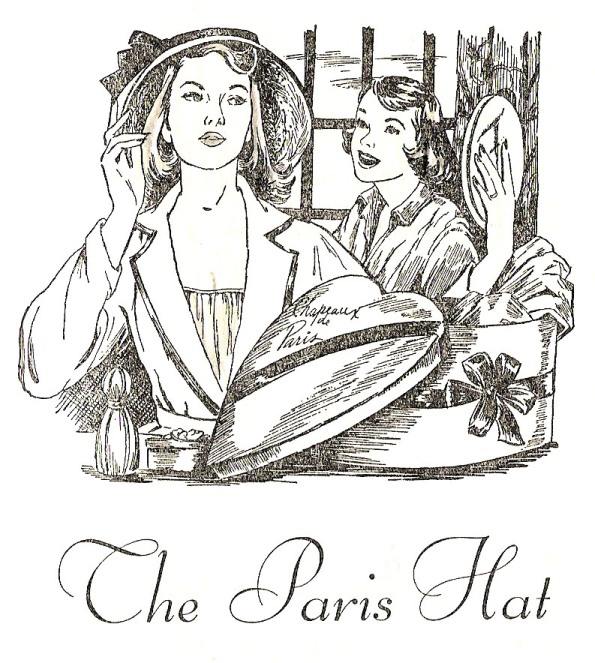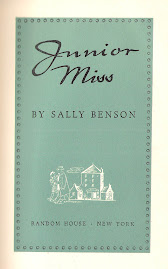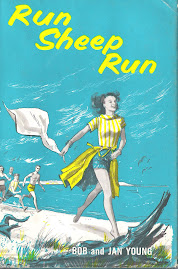 Title: Emily of Deep Valley
Title: Emily of Deep ValleyAuthor: Maud Hart Lovelace
Illustrations: Vera Neville
Publisher: Thomas Y. Crowell, 1950
Setting: Deep Valley (a.k.a. Mankato), Minnesota
Fun: Little Syria; frog legs; the Browning Club; the election of Woodrow Wilson
Quote: "I'm through high school, I'm finished with something, but I'm not beginning anything. That's wrong. When you finish something, you always ought to begin something new. But I'm just going to go on doing housework, looking after Grandpa."
I have never counted myself a huge fan of the Betsy-Tacy books. Perhaps it was growing up in the 1970s, but I always felt there was something pallid about the whole series. Betsy never has any problems that can't be solved by going on a picnic and I think there is one recorded instance, in the whole ten books, where she says something not-very-nice about another girl. But one aspect of Betsy-Tacy has always seduced me, and that is the idea that to stand on the verge of adulthood about 1912 or so must have been bliss. Psyche knots, watch bracelets, organdy dresses, the Philomathians, Class Day, the Junior-Senior banquet -- all the girls happy and self-confident, the boys full of mischief and fun -- the entire insular American world at their feet.
Emily is a spin-off of Betsy-Tacy. Set in the same town, and full of off-hand references to Betsy Ray and Tib Mueller, it is also a little darker, as if Lovelace wanted to rework some of her earlier themes in a more realistic way. For Emily Webster, unlike Betsy, has problems that can't be solved by going on a picnic.
Emily has been raised by her grandfather, a Civil War veteran who lives mainly in the past. He sees no sense in sending Emily to college -- he thinks he was generous to let her finish high school. Unlike Emily's high-school friends, who troop happily off to the "U" anticipating sorority rushes and all kinds of fun, Emily knows that college would really mean something to her -- she wants to be a sociologist, like her idol, Jane Addams. Instead she is left in Deep Valley as winter comes on, without a friend, male or female, her own age.
Emily, however, does not repine. She buys a new hat, begins formal study of the works of Robert Browning, and learns to do the "Gaby Glide." And she takes a look at the community around her, including the Syrian immigrants who live on the wrong side of the slough. There's a notable anti-immigrant feeling in Deep Valley, but Emily, with the help of handsome, interesting, Jed Wakeman, organizes a boy's club as well as citizenship and English classes for the adults.
None of this comes easily. Lovelace was good at drawing scenes of adolescent fun and friendship -- sleigh rides, sing-a-longs, skating parties. In this book she inverts the usual: the most painful scene in the book occurs when Emily sits through such a sleigh ride with an unwilling date, knowing she doesn't fit in and detesting the silliness of the girls she has been friends with all through high school:
"[Their] talk would be about their colleges, their new experiences. She had had new experiences, too, she thought with proud resentment, but when she was with the crowd they seemed to be of no importance. It was true even with the girls...She wasn't tired of her friends, but she was tired of pursuing them as though her own life were worthless."
By the end of Emily of Deep Valley, the last tie to her old crowd has been cut when she turns down the patronizing Don for Jed Wakeman. They will stay in Deep Valley, Jed teaching, Emily continuing her work with the Syrians. In the Betsy-Tacy books, "the crowd" is a source of strength -- a rock of friendship in the tumult of life. But Emily creates a satisfying, independent life for herself only by growing beyond the crowd. I never read Emily of Deep Valley as a child -- as it wasn't part of the regular Betsy-Tracy books the Lexington library didn't have it.* But if I had I think it would have redeemed the entire series for me.
*By some miracle, the Henderson Public Library, which does not have most of the upper books of the Betsy-Tacy series, has a 1950 first printing of Emily of Deep Valley. So far they have not cast it off onto the "Pages for Pennies" shelf.











